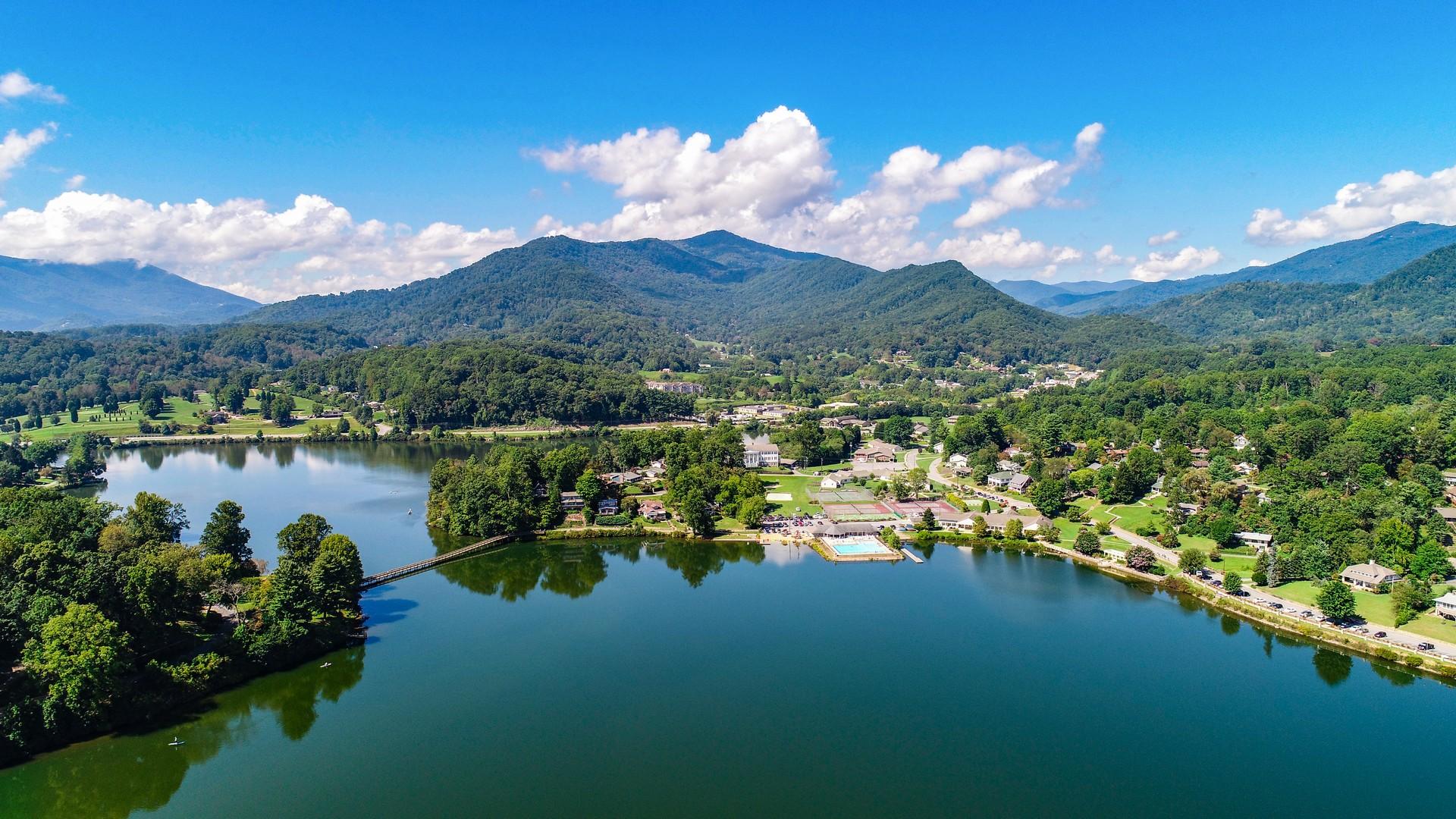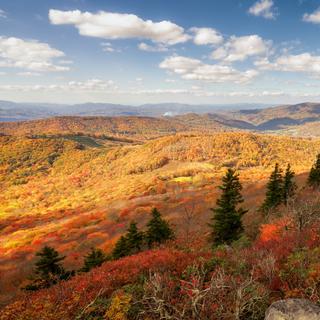
Maggie Valley weather and climate in 2025

Maggie Valley weather and climate in 2025
Day
26 °C
Night
14 °C
Precipitation
141 mm
in month
Rainy days
12 days
in month
Daylight
14 hours
average
Sunshine
8 hours
average
Humidity
80 %
Weather charts for Maggie Valley

Find more destinations like this
Destinations with similar weather to Maggie Valley
Other destinations in Great Smoky Mountains
Closest cities for Maggie Valley
Last week's weather in Maggie Valley
The average temperature for the week of 23 June 2025 - 29 June 2025 was 29 °C (84 °F) during the day and 17 °C (63 °F) during the night. These temperatures are above the long-time average for Maggie Valley, being 25 °C (77 °F) for daily temperatures and 13 °C (55 °F) for night temperatures. The average temperatures observed during different times of day (based on local time) were as below: 7am 18 °C (64 °F), 10am 24 °C (75 °F), 1pm 29 °C (84 °F), 4pm 27 °C (81 °F), 7pm 23 °C (73 °F), 10pm 21 °C (70 °F).
The week had 5 days without rain and 2 days with light rain. The total precipitation for the week in Maggie Valley was 4 mm (0.16 in), which is below the area's average of 32 mm (1.26 in). During the daytime (from dawn to dusk), there was 44 % cloud coverage on average.
The wind's speed averaged 0.9 m/s. The air pressure varied between 1017 hpa and 1027 hpa. The air in Maggie Valley had an average humidity of 75 %.
On average, there were 6.5 hours clear skies, 5 hours partially overcast skies and 4.5 hours overcast skies during the daytime (from dawn to dusk). On average, the time of sunrise was 06:18, and the time of sunset was 20:51.
Weather overview for Maggie Valley
Weather overview
Nestled in the United States, Maggie Valley is known for its agreeable weather conditions. Throughout the year, temperatures fluctuate from a brisk average daytime low of 7 °C (44 °F) in the coldest month to a warm average high of 26 °C (78 °F) during the peak of summer. The evening temperatures reach their zenith in July at 14 °C (57 °F), while January evenings can see temperatures dropping to -5 °C (23 °F). Notably, October emerges as the driest period with a scanty 8 days of rainfall, whereas July stands as the month with the most precipitation, experiencing 12 days of rain.
January weather
In January, the minimum daytime temperature in Maggie Valley dips to an observed 7 °C (44 °F), with night temperatures touching their lowest at -5 °C (23 °F). The amount of rainfall begins to decrease to 123 mm (4.85 in), and the number of rainy days sees a gradual rise to 12 days. A peak in wind speed is apparent, recorded at 5.
February weather
With the arrival of February, a subtle increase in daytime temperatures to 8 °C (47 °F) in Maggie Valley is noted, complemented by a slight rise in nighttime temperatures. Concurrently, rainfall begins to climb. Continuing the trend, the number of cloudless sunny hours sees an uptick to 6 hours.
March weather
A continued rise in rainfall is observed in March, amounting to 136 mm (5.33 in) in Maggie Valley. Daytime temperatures lightly ascend to 13 °C (55 °F), while nighttime temperatures incrementally increase to -1 °C (31 °F). Bright sunshine hours also progress, reaching 7 hours.
April weather
April marks the continuation of rising temperatures, with daytime readings reaching 17 °C (63 °F) in Maggie Valley and night temperatures climbing to 3 °C (38 °F). The trend in decreasing rainy days commences, and rainfall begins its descent as well. Humidity hits its lowest point for the year at 64 %. Sunny hours keep on expanding, now at 8 hours.
May weather
May experiences a continued elevation in day temperatures, reaching 21 °C (70 °F) in Maggie Valley, with nights growing warmer at 8 °C (46 °F). The opening of the tourist season is marked by an onset in the increase of rainfall, registering at 128 mm (5.05 in), and a concurrent rise in the number of rainy days to 12 days.
June weather
June boasts a significant rise in both daytime and nighttime temperatures, being part of the tourist season. Rainfall continues its upward trajectory, noted at 136 mm (5.37 in). The peak for both sunshine hours and daylight duration is evident during this month.
July weather
July sees the pinnacle of daytime temperatures, peaking at 26 °C (78 °F) in Maggie Valley, with nighttime temperatures also reaching their highest. In tandem with the ongoing tourist season, the maximum rainfall is recorded at 141 mm (5.55 in), along with the most numerous rainy days, tallying at 12 days. Sunny hours begin their gradual decline, noted at 8 hours.
August weather
The onset of the decline in rainy days to 11 days is observed in August in Maggie Valley, and a corresponding start of the decrease in rainfall to 128 mm (5.02 in) is noted. Sunny hours continue their decline, now at 7 hours. The tourist season remains vibrant, and August experiences the highest humidity of the year.
September weather
September's weather is characterized by a decline in daytime temperatures, now at 23 °C (73 °F), and nighttime temperatures also start to cool, reflected in a measurement of 11 °C (51 °F). The continued descent in the number of rainy days is paralleled by a decrease in rainfall. The tourist season persists, and sunny hours keep reducing, currently at 7 hours.
October weather
With the tourist season still underway, Maggie Valley's day temperatures continue their descent, reading at 18 °C (65 °F), as do the night temperatures, now at 5 °C (40 °F). October marks the occurrence of the minimal rainfall amount, averaging at 90 mm (3.55 in), and the minimal number of rainy days, registered at 8 days.
November weather
November showcases a descending trend in daytime temperatures, now at 13 °C (55 °F), with nights also experiencing a cool down, reaching 0 °C (32 °F). A beginning rise in the number of rainy days is evident, totaling 10 days, and a rise in rainfall commences as well, measured at 124 mm (4.89 in). The start of the decrease in sunny hours is apparent, now at 5 hours.
December weather
The upward trend in the number of rainy days to 11 days continues in Maggie Valley throughout December, and rainfall slightly rises from the previous month as well, registering at 133 mm (5.23 in). Daytime temperatures continue to lower, similar to the previous month, now at 8 °C (46 °F), with nighttime temperatures persisting their descent, coming in at -4 °C (26 °F). The shortest sunny hours are experienced, clocking in at 5 hours. The day length is at its minimum, averaging at 10 hours.
FAQs
What is the typical nighttime temperature in Maggie Valley during January?
Nighttime temperatures tend to average around a chilly -5 °C (23 °F) in January.
How does the February weather in Maggie Valley compare to January in terms of sunshine?
February generally offers marginally more sunshine, averaging 6 hours of clear skies, in contrast to January.
Does the amount of rainfall in Maggie Valley increase in March?
Yes, March typically sees an escalation in rainfall, with an average accumulation of 136 mm (5.33 in).
What is the trend in humidity for Maggie Valley during April?
In April, humidity in Maggie Valley decreases to its lowest yearly level, averaging at about 64 %.
As the tourist season begins in May, how does the weather in Maggie Valley change?
With the onset of tourist season in May, Maggie Valley sees warmer days averaging 21 °C (70 °F) and nights at 8 °C (46 °F), accompanied by increasing rainfall, averaging 128 mm (5.05 in).
Can visitors enjoy long days in Maggie Valley during June?
Certainly, June in Maggie Valley offers extended daylight hours, making it an ideal time for tourists to relish the longer days.
What characterizes the weather in Maggie Valley during the height of summer in July?
July in Maggie Valley is distinguished by the highest daytime temperatures and the most significant rainfall of the year, making it a warm yet moist month.
How do the weather conditions shift as Maggie Valley progresses through August?
August in Maggie Valley begins to show a downtrend in rainy days and rainfall, with slightly fewer sunny hours, amidst the persisting tourist season.
What changes occur to the rainfall pattern in Maggie Valley during September?
September in Maggie Valley experiences a reduction in both the frequency of rainy days and the total rainfall volume.
How does the autumnal weather commence in October in Maggie Valley?
Autumn introduces cooler days and nights in Maggie Valley, coupled with the least rainfall seen throughout the year.
As winter approaches, how does the weather change in Maggie Valley during November?
The approach of winter in November sees dipping daily temperatures and a gradual increase in rainfall and rainy days.
What are the characteristics of December weather in Maggie Valley?
In December, Maggie Valley witnesses increased rainy days and a gradual uptick in rainfall, coupled with reduced temperatures and the shortest days of the year.











